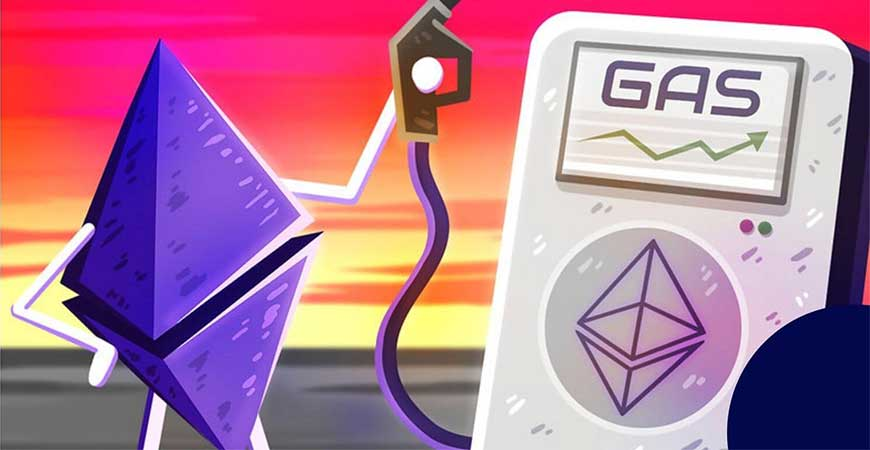
How to save gas fees while transacting NFT
Everyone is wondering what gas fees are and how it’s related to NFT. Whenever you purchase the Ethereum blockchain, you must pay a gas fee for the transaction to be validated. Ethereum is one of the most popular NFT underlying technology. This is one of the new developments associated with web 3.0. Investors are annoyed by high gas prices and high gas fees. Let’s take a look at why the gas fee is so high and how one can save gas fees when purchasing NFT.
Ethereum is the currency that is used to pay the gas fees; however, there are other currencies which has made a mark in NFT buy sale but mostly ETH is being used. The focus here is on ETH; in particular, Ethereum uses the Gwei unit of gas as its unit of measurement. Among the key differences between Ethereum and other cryptocurrencies, such as Bitcoin, is the use of gas to process transactions. By imposing gas limits, each computation execution pays to keep malicious individuals from taking over the Ethereum network and making them de facto coders; they prevent malicious developers from hijacking the future they worked together to build. Ethereum’s gas acts as a regulator, preventing the network from being spammed. In order to maintain security, Ethereum computations stretch a security measure. From the security point of view, ETH transaction has to be secure, and this is why it takes a bit more, and gas fees are a bit high and are constantly changing.
NFT adoption boomed in the 21st century. This can be partly attributed to the adoption of play-to-earn games and the sale of primary and secondary NFT artwork. In 2022, retail will become more interested in blockchain technology. In addition, Ethereum’s expensive gas fees and blockchain’s scalability issues have caused friction. Using the NFT world has become more complicated due to these factors. Also, it depends on traffic and transactions happening in a certain period. If the demand is high, then gas fees are high, and if the demand is less, then gas fees fluctuate on the lower side. Gas fees are like the swing of the sword and could hurt a lot of ongoing and newly launched NFT projects.
We should give the NFT artists more control over the minting schedule. Many marketplaces allow artists to produce work only at clicking mint. Ideally, artists should be able to select how long they are willing to wait for network congestion to pass before they publish their work. That is already possible with the NFT gateway. Wallets have explicit disclaimers that the art may take up to 24 hours to appear. We haven’t experienced such a long wait, but we have encountered waits of up to two hours for expensive drops. But if it has charged excessive fees, unused gas fees are being returned to the appropriate users.
Similarly, if the gas fees are counted in different currencies, such as solana, then gas fees could be cheaper in transacting NFT. Nowadays, many artists or NFT creaters choose different currency rather than ETH because there are a lot of advantages; firstly and most important is low gas fees. Secondly, it’s not that heavily trafficked, and most of it, it’s convenient and cheap for users. Other currencies can take a bit of time to make a transaction, but now users are used to it, and it has come to attention. Even well-known artists are not opting to launch the project in other currencies rather than ETH.
The procedure of lazy minting is when the gas fees are deferred from the creators to the buyers. Since this feature does not constrain the market’s potential, it is a powerful feature. The Ethereum network is where the vast majority of liquid trades for NFTs are conducted. Users must discover the fees associated with the marketplace and the commissions associated with secondary sales
Another alternative solution to the mess could be using a layer2 sidechain. Axie Infinity is the most popular play-to-earn game. Ronin had to be built up as a sidechain before the game’s success. Many people would not have been able to afford the high gas fees if the Axie team had relied on Ethereum. A decreased level of user activity and total value locked in the network would result as a result. Currently, there are a lot of other blockchain networks like Solana and polygon that are hot favorites and on track to be the mainstream.
Overall, there are certain ways to save gas fees to buy and sell NFT. Even if it’s in different cryptocurrencies, there are wider options to choose from. In the future, there are chances of getting better and cheaper the gas fees, but it’s still in the process of making it secure and safe. Priority is being given to R & D, and we are sure there will be a better and more convenient step to be taken to improve the transaction fees.
Search
Recent NFT News
Reasons You Should...
9 months ago
The NFT Market in ...
11 months ago
Comparing Environm...
12 months ago
Pump and Dump Sche...
12 months ago
The Ultimate Guide...
1 year ago







